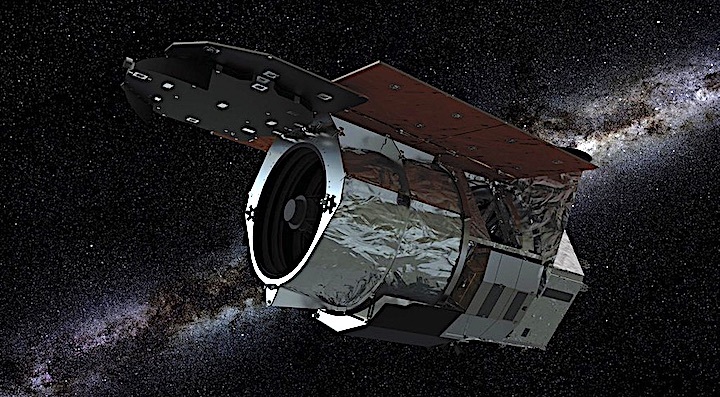13.11.2019
WFIRST passes preliminary design review

WASHINGTON — A NASA space telescope recently completed a major review and is making good progress, project officials say, despite uncertainty about its funding.
NASA announced Nov. 1 that the Wide-Field Infrared Survey Telescope (WFIRST) passed its preliminary design review (PDR), a major milestone in the development of the space-based observatory. That overall PDR came after similar reviews in recent months of various components of the spacecraft.
Curiously, NASA did little to publicize the completion of the PDR, which is usually considered a major step forward for any spacecraft project. The mission issued a single tweet Nov. 1 about the completion of the review, but no formal press release or other statement about it. By contrast, the completion of the PDR for WFIRST’s telescope, one element of the overall spacecraft, merited its own release in August.
Michael New, deputy associate administrator for science in NASA’s Science Mission Directorate, told the National Academies’ Space Studies Board at its fall meeting Nov. 6 that WFIRST passed the review “with flying colors.” He added that the work converting the telescope’s 2.4-meter primary mirror, which NASA inherited from another government agency — most likely the National Reconnaissance Office — was going better than expected.
WFIRST’s low profile comes as it is caught in a budgetary tug-of-war between the White House and Congress. The administration’s fiscal year 2020 budget request sought no funding for WFIRST, concluding funding was needed for the James Webb Space Telescope. The White House also sought no funding for WFIRST in fiscal year 2019, but Congress appropriated $312 million for the mission in its final spending bill.
Both the House and Senate have moved to fund WFIRST in their respective fiscal year 2020 appropriations bills, but at different levels. The House bill offered $510.7 million for WFIRST, while the Senate bill provides $445.7 million.
“In either case, we would be able to continue and be successful with WFIRST,” said Paul Hertz, director of NASA’s astrophysics division, during an Oct. 29 meeting of the agency’s Astrophysics Advisory Committee.
He added, though, that the lower funding in the Senate bill could require NASA to stretch out the program, delaying its planned 2025 launch. “But in one case, the project would have to adjust their plans, which might require an adjustment in the launch date and other commitments,” he said. He added it was premature to discuss how much of a change, if any, would be needed until the fiscal year 2020 budget is finalized.
The mission currently is on schedule for a launch in 2025, he said. “We would like to stay on track, but if budget realities mean that we have to make slight replans, we’ll just do that.”
WFIRST has support in the new NASA authorization bill introduced by a bipartisan group of senators Nov. 6. The bill directs NASA to continue WFIRST within its current cost cap of $3.2 billion so that it can meet the objectives in the 2010 astrophysics decadal survey, whose top-ranked large mission was WFIRST.
The next major step for WFIRST is a confirmation review, known as Key Decision Point C (KDP-C), where NASA makes formal cost and schedule commitments for the mission. Jeffrey Kruk, WFIRST project scientist, said at the Astrophysics Advisory Committee that the review should be completed in early February.
Prior to the KDP-C review is the completion of the project’s own cost and schedule assessments as well as two independent assessments, one by the Goddard Space Flight Center, which manages the mission, and the other by a standing review board. A series of reviews both at Goddard and NASA Headquarters will follow from December to February, Kruk said.
Quelle: SN
